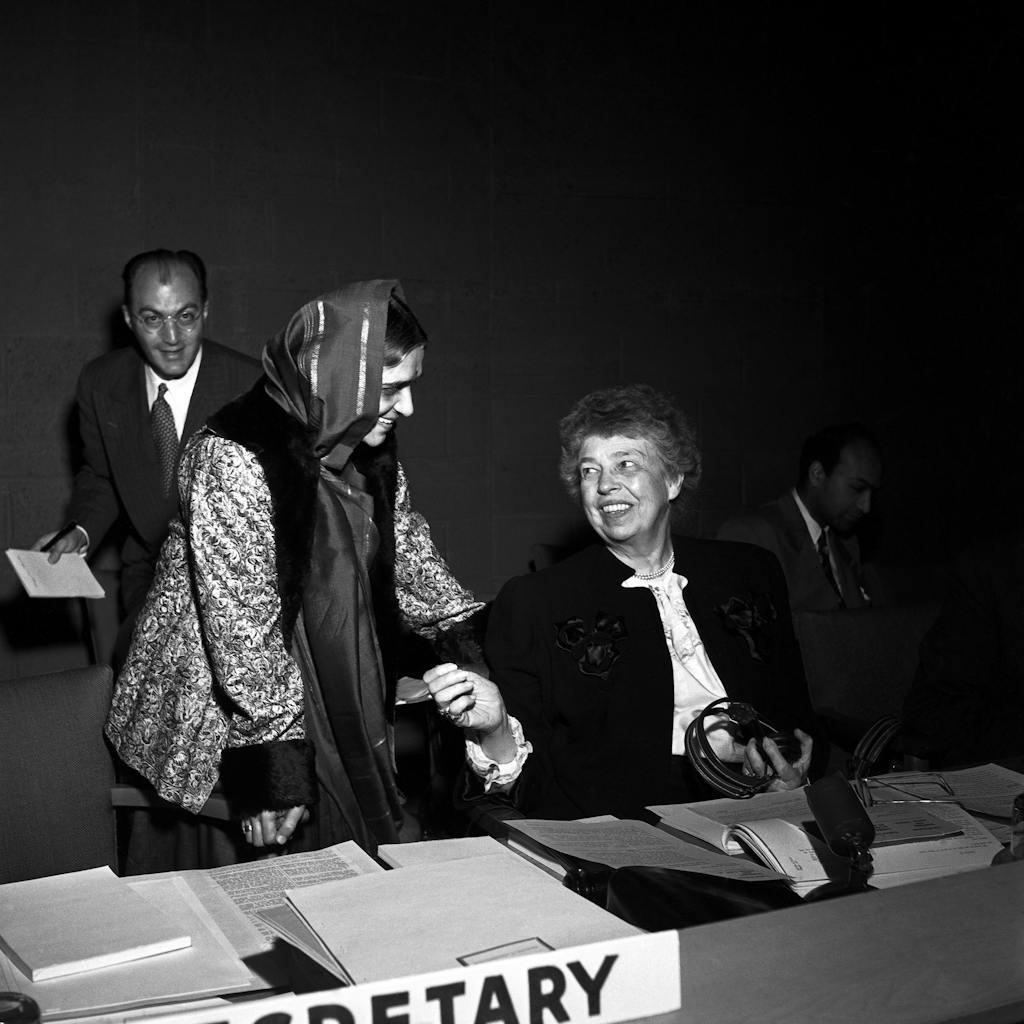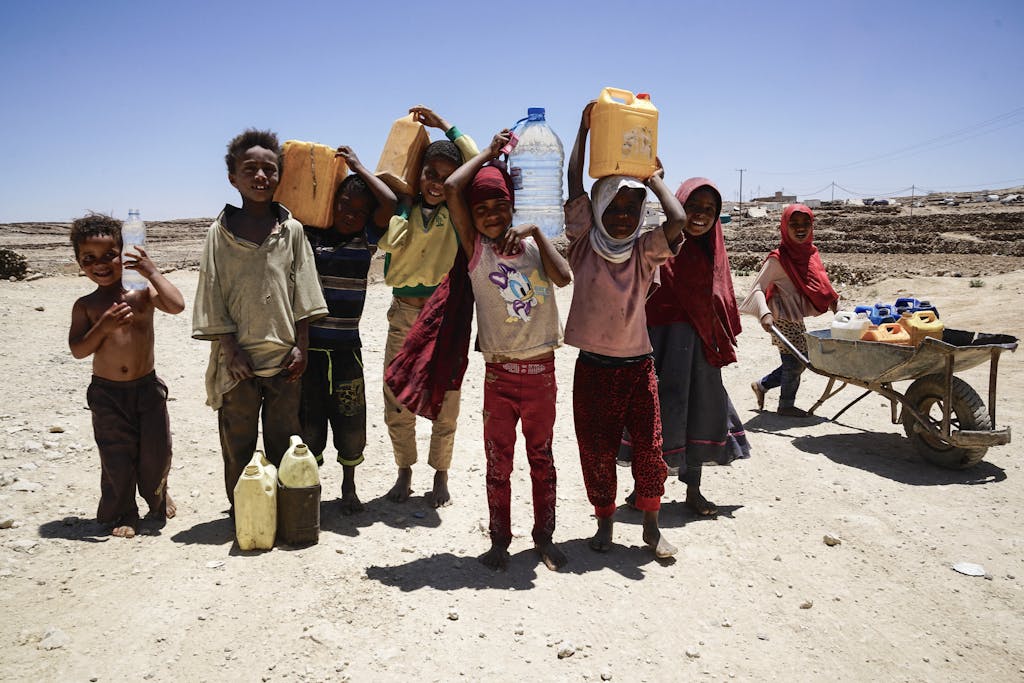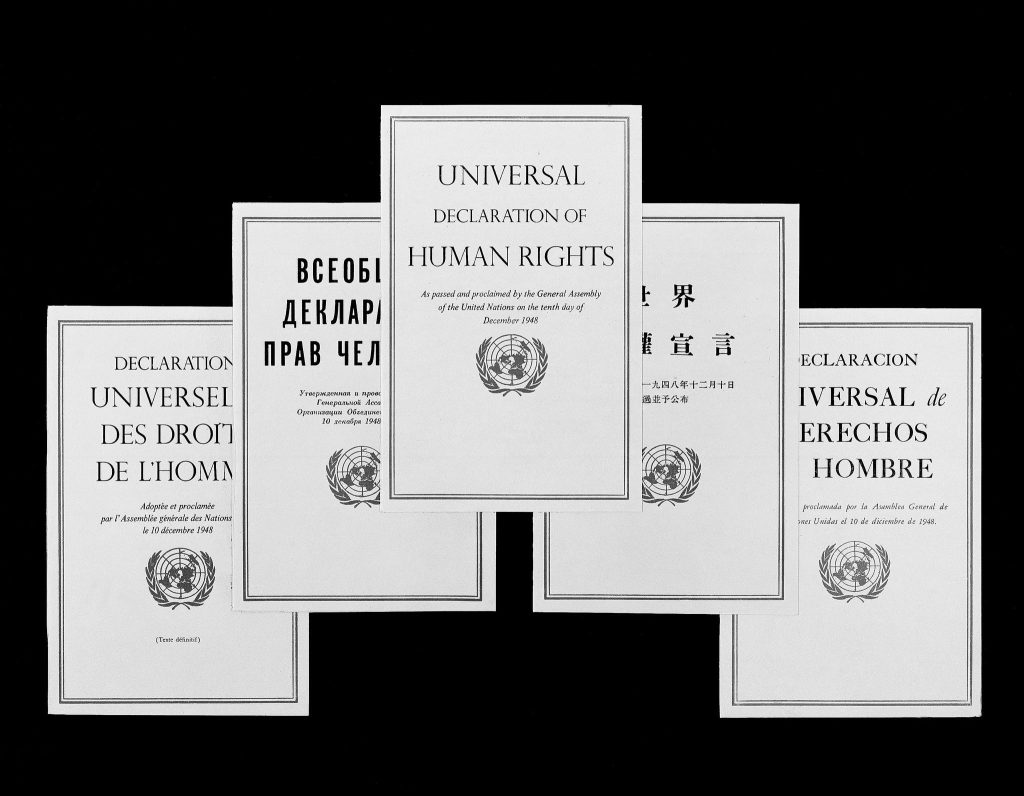On December 10, the most translated document in the world – the Universal Declaration of Human Rights (UDHR) – turns 70 years old. While the declaration has established enduring human rights principles for everyone, everywhere and has become a central guiding force for the United Nations, the full reach and scope of its impact is often overlooked – or taken for granted.
We spoke with Andrew Gilmour, the UN’s Assistant Secretary-General for Human Rights, to better understand the history of the UDHR, how it advances human rights globally, and some of the biggest opportunities and challenges facing human rights today.
Can you briefly explain how World War II set the stage for the creation of the Universal Declaration of Human Rights in 1948?
Andrew Gilmour: WWII remains the deadliest war in history. In response not only to the horrors of war and genocide, but also of the economic depression of the 1930s, this magnificent and noble document was agreed to in 1948. The impetus clearly came from a growing demand and a recognition by all countries that there needed to be some global commitment through a framework to prevent the atrocities that took place during the war as well as the terrible economic hardships before and after it. Thus, the UDHR was designed to cover the entire spectrum of human rights: civil and political, but also economic, social, and cultural.
What role did the US play in its creation?
AG: The U.S., through Eleanor Roosevelt and others, played a pivotal role in the drafting of the UDHR as the Chair of the Commission on Human Rights from 1946 to 1951. She was in many ways the quintessential multilateralist, looking beyond her national interests and recognizing that certain values and interests transcend national agendas and are common to humanity. Despite the great momentum at the time, Eleanor Roosevelt’s task was still by no means an easy one.
She had to lobby governments, and she had to make the case that certain rights are common to all countries – and this in a time when the world was still very polarized. The USSR and other countries under Soviet influence were not in favor of the so-called “negative” rights, such as the ones where countries are called on to refrain from violating civil and political rights. Others, including those in the developing world, were concerned about the financial burden placed on governments to provide for “positive” economic, social, and cultural rights.
On the other hand, Western countries were much more focused on civil liberties and fundamental freedoms. In the end, Eleanor Roosevelt, on behalf of her country, managed to bring these divergent interests together to agree on a common standard. In this sense, the U.S. was instrumental to the creation of the UDHR.

How does the UDHR shape the work of the United Nations?
AG: The UDHR guides much of the work of the organization. The rights contained in it relate to all three pillars of the United Nations: peace and security, development, and human rights. We simply cannot have peace and security without some of the basic fundamental freedoms that are enshrined in the UDHR, such as the right to life, security, and liberty of the person, but equally we cannot have development without the right to health or the right to education, for instance. Principles of non-discrimination and equality are fundamental to the work of the UN.
The promise of, and commitment to, global sustainable development – especially the call that no one should be left behind, starting with those furthest behind – is a rights agenda. It is a universal agenda encompassing all Member States and thus a foundation for fairness where there is injustice, for inclusion in defiance of exclusion, and a commitment that global values be applied universally.
Similarly, the Secretary-General’s prevention agenda also recognizes the human rights framework as central. The Secretary-General himself has said on occasion that the best prevention tool we have is the UDHR and the treaties that derive from it, not least because almost every internal conflict in the world has human rights violations among its root causes. The UDHR continues to be as relevant today as it was in 1948 post WWII.
The UDHR is not a legally binding document, so how does it advance human rights globally?
AG: Although the UDHR is not a legally binding document, it is not merely aspirational either. It has become somewhat of a yardstick to measure Member States’ commitments to human rights, including through the various human rights mechanisms that monitor the implementation of human rights by Member States, such as the Universal Periodic Review.
Many of the rights enshrined in the UDHR have subsequently been reflected in other human rights instruments and treaties that have been ratified by Member States, so indeed, much of the UDHR is now codified into binding human rights obligations. Nonetheless, there is a growing recognition that the rights in the UDHR contain minimum standards that are applicable to all countries.
Is there a particular case study that stands out to you?
AG: This week I visited Yemen, so let me talk about that. I was shocked by what I saw. Indeed, virtually every article of the UDHR is being flagrantly and brutally disregarded. The parties to the conflict are deliberately creating massive humanitarian suffering as a tactic of war, including by restricting the delivery of emergency food and medical supplies.
There is a complete breakdown of the rule of law which has had a terrible impact on people’s rights to life, security, freedom from arbitrary arrest and torture, freedom of expression (especially of journalists), and freedom of religion (especially among the Bahai community), as well as essential social and economic rights, including to food, education and health. During my visit, I met with the mothers of detainees who recounted tragic tales of missing husbands, sons, and brothers. I was also shocked by the wholly or partly destroyed buildings, including cultural sites.
It is hard to imagine that human rights exist in these type of situations, where virtually every human right is being violated, which make the role of the UN all the more important by reminding countries of their obligations toward their people.

What are some common misperceptions about the UDHR?
AG: Perhaps one of the most common misperceptions is that the UDHR somehow does not reflect universal standards – that it is some kind of Western document that does not take into account values of other cultures and regions. This is simply not true. First of all, many representatives of non-Western countries played a key role in the drafting of the UDHR and have ratified core human rights treaties since then.
Secondly, time and again it has been proven that human rights – be they civil and political or economic, social and cultural – are common values that are pursued by people globally. Why is the right to food for example not a “Western right” or the right not to be tortured? While some countries may prioritize one set of rights over the other, there can be no doubt that given a choice, people everywhere in the world will wish to have all their rights fulfilled.
70 years after its inception, what do you see as the biggest challenges and the biggest opportunities for the UDHR?
AG: High Commissioner Bachelet has recently said that she is convinced that the human rights ideal has been one of the most constructive movement of ideas in human history – as well as one of the most successful. But today, that progress is under threat. We are experiencing unprecedented challenges when it comes to implementing some of the very same standards, that were adopted by consensus by Member States in 1948. We are seeing pushback on gender rights, including sexual and reproductive rights and also LGBTI rights, although the record there is mixed with progress in North and South America, Western Europe and a few other places, but regression in other parts of the world.
We see a cruel scapegoating of minorities: Central Americans falsely accused in the U.S. of being more likely to be criminals than regular citizens; Muslims under great pressure in Europe and the U.S., and the Rohingya being victimized to the extent of disenfranchisement, killings, mass rape, and expulsion. Syrians, Yemenis, South Sudanese, and others killed in the tens of thousands. And millions of Palestinians still under a humiliating occupation that has violated almost all their human rights for over half a century.
Perhaps what concerns me the most is the clamp down of human rights defenders. In country after country, the space is closing for civil society. We see this in harsh laws to restrict NGOs, often under the guise of counter-terrorism and in the growing number of cases of restrictions and reprisals against human rights defenders.
This 70th anniversary of the UDHR presents an opportunity for us all to recommit to the ideals enshrined in the UDHR – to reaffirm our commitments to human rights and to stand up to those who challenge these hard-won advances that have been possible through the tireless work of activists and Member States that are willing to listen to them.
To commemorate the 70th anniversary of the Universal Declaration of Human Rights, join the UN’s #StandUp4HumanRights campaign to promote and defend universal human rights.

